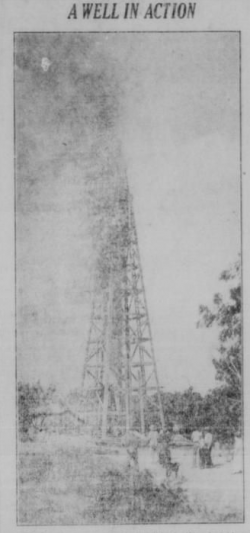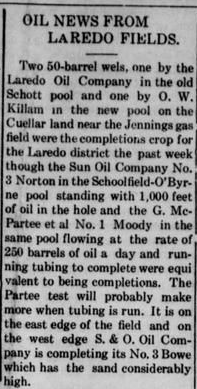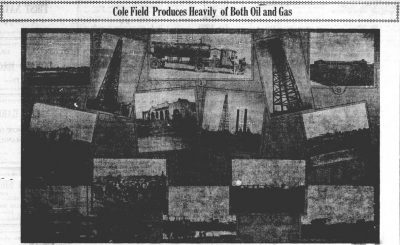This Laredo oil boom blog post comes from Spencer Houghton, the NDNP-Texas graduate student assistant working in the Digital Newspaper Unit.
The March 16, 1928, issue of the Laredo Weekly opens with the headline, “Laredo’s Big Opportunity,” a call for “concerted action on the part of every agency” to “get together and make an effort that will put wealth and life back into our oil fields.” Little did they know that just a few months later, with the discoveries of the Schoolfield-O’Byrne Pool in Duval County, and the Las Albercas Field in Webb County, 1928 would hasten the revival of Laredo’s once-booming oil industry.

Extensive writeup from the Corpus Christi Caller about the Mirando Oil Field (Laredo oil district)
Oil was discovered in Laredo by accident in the early 1900’s. Cattle ranchers desperate to satiate their sun-baked herds drilled deep into Laredo’s drought-stricken soil in search of water but instead found oil.  Despite this early discovery, it wasn’t until 1921 when the “dean of the oil industry in the Laredo district” O.W. Killam, struck gold on his third well in the Mirando Valley, that Laredo became an oil-town. According to the Laredo Weekly on December 28, 1928, Killam’s discovery proved to industrialists nationwide that “there was oil in paying quantities in this territory.”
Despite this early discovery, it wasn’t until 1921 when the “dean of the oil industry in the Laredo district” O.W. Killam, struck gold on his third well in the Mirando Valley, that Laredo became an oil-town. According to the Laredo Weekly on December 28, 1928, Killam’s discovery proved to industrialists nationwide that “there was oil in paying quantities in this territory.”
By 1935, news of oil dominated the front pages of many Texas newspapers. Alongside the “Plains Oil Field News” in the Amarillo Daily News [LCCN: sn85042551] and the “West Texas Oil News” in the Big Lake Wildcat , the Laredo Times ran a “Weekly Review of Oil Activities Around Laredo” every Friday, publishing the number of new wells and field acquisitions in the area. At the close of 1935, the Laredo district had 1,871 producing oil wells, pumping over 32,000 barrels daily.
Oil ventures continued to expand in 1936, with thirty-one new wells in the last week of August alone. The explosion of interest in Laredo’s rich oil fields led the Laredo Times to maintain that the path was paved for a Southwest Texas oil boom. Their prescience proved infallible, as 1936 ended with 3,100 producing oil wells and over $2,000,000 million (~$45,000,000 today) in payroll for the 5,000 to 7,000 employed directly by oil and gas companies. Investment in Laredo’s generous oil reserves would continue to grow throughout the 1930’s.
For more information on Laredo, the Laredo Times, and the Southwest Texas oil boom visit The Portal to Texas History and Chronicling America.
 |
 |


